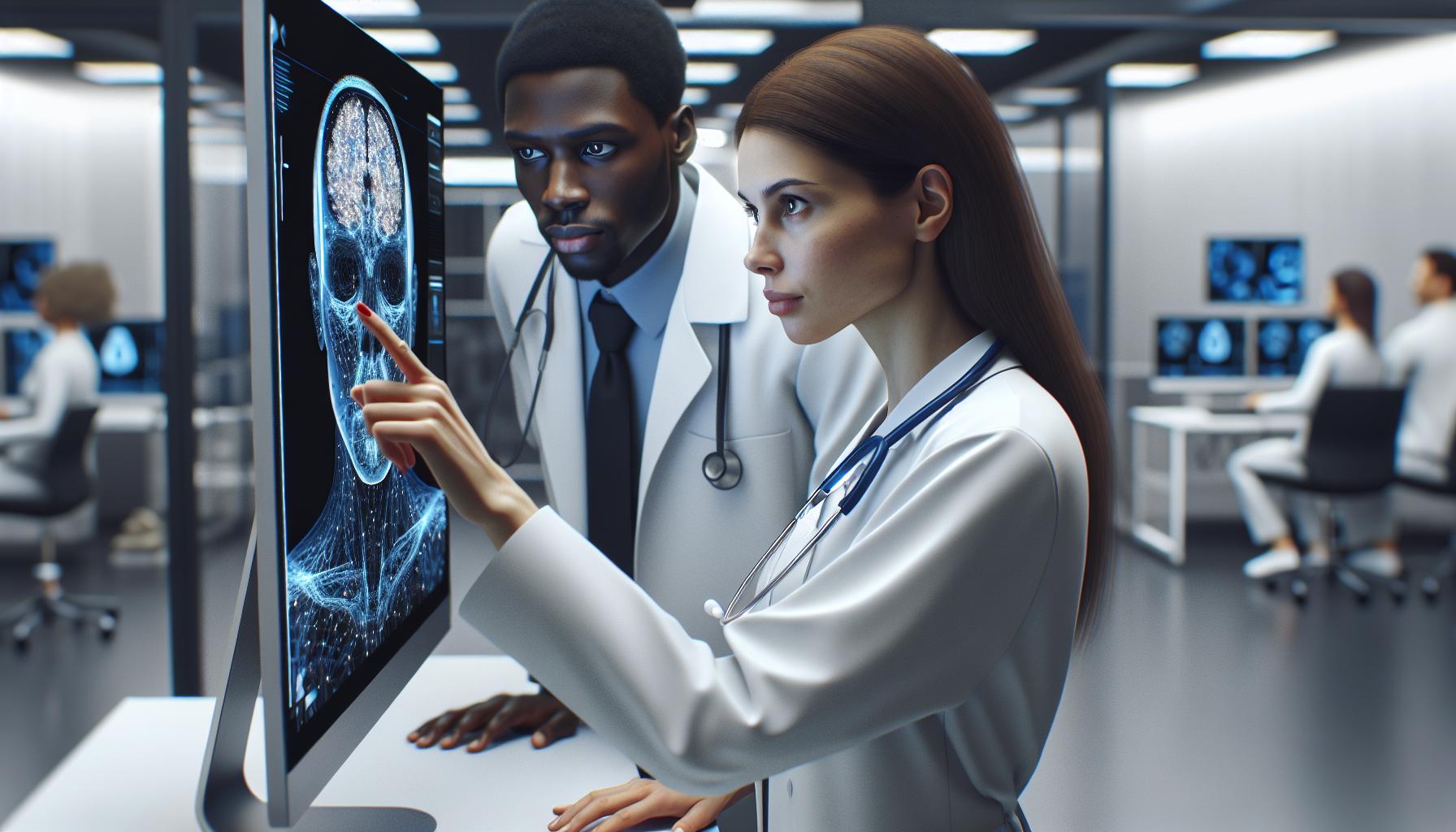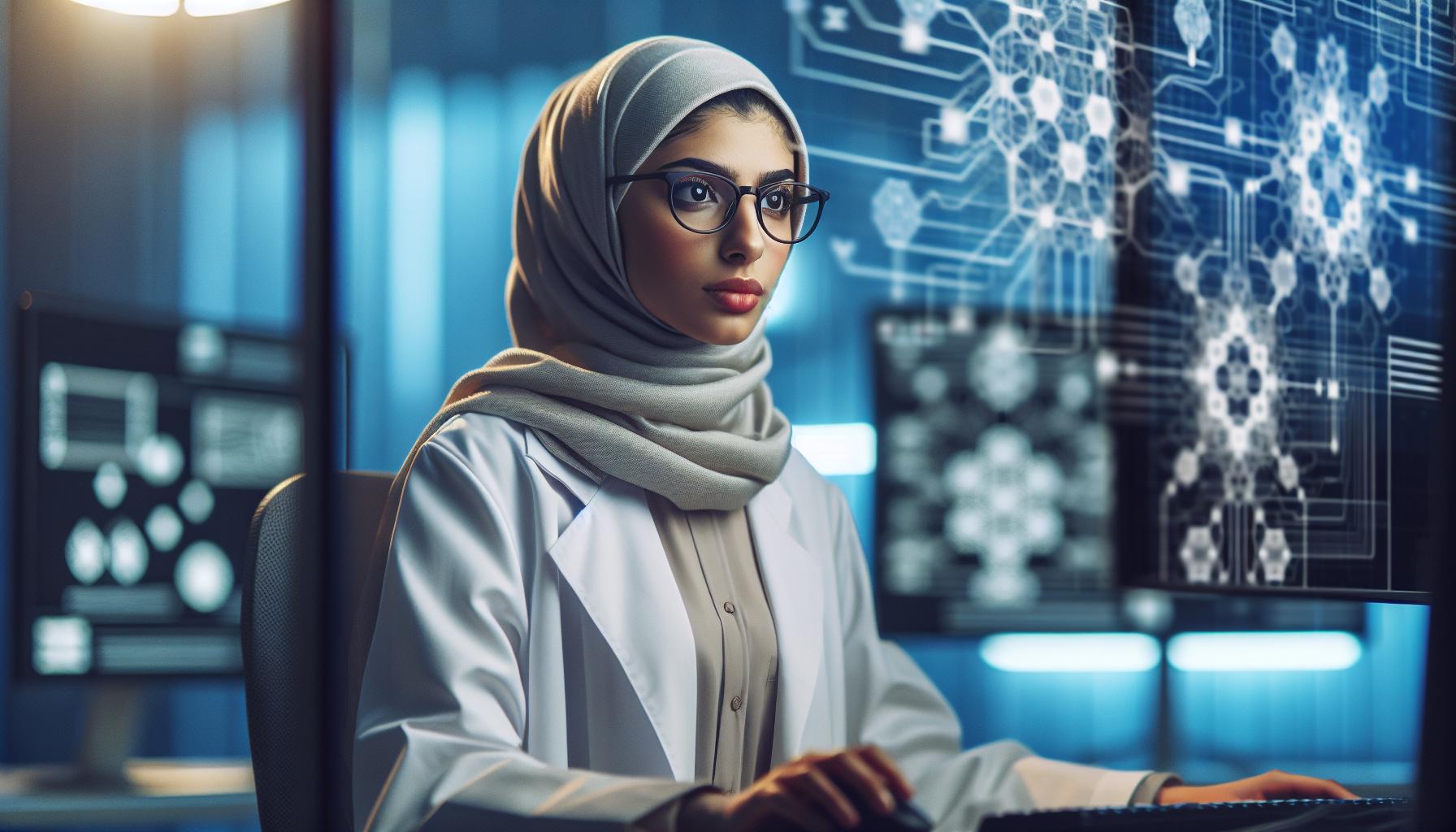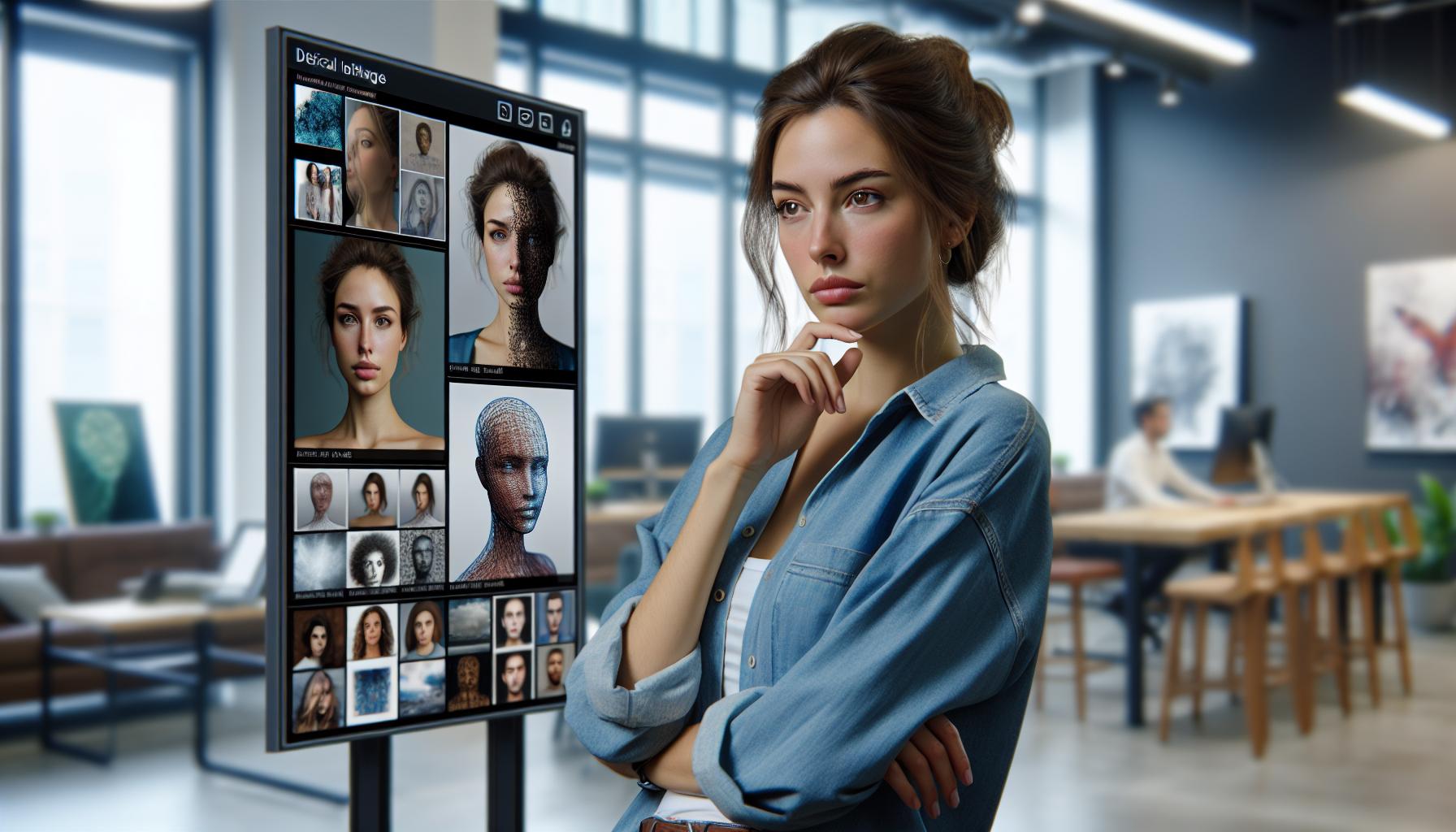Key Takeaways
- Transformation of Art: AI technology is revolutionizing the creation and interaction with images, making art more accessible and innovative.
- AI Image Generators: Tools like DALL-E and Midjourney empower users to quickly create high-quality visuals, changing traditional artistic methods.
- Cross-Industry Applications: AI enhances various sectors, including healthcare for diagnostics, entertainment for visual content generation, and automotive for autonomous driving systems.
- Collaboration of Human and AI Creativity: AI acts as a creative partner, allowing artists to expand their abilities and explore new styles.
- Ethical Considerations: Issues such as copyright infringement, data privacy, and bias must be addressed to ensure responsible AI usage in image technology.
- Future Trends: The evolution of AI in image technology will lead to improved personalization, real-time processing, and a focus on ethical standards.
Artificial intelligence is transforming the way we create and interact with images. From generating stunning visuals to enhancing existing photographs, AI image technology is pushing the boundaries of creativity and innovation. As algorithms become more sophisticated, they’re enabling artists and designers to explore new realms of expression, making art more accessible than ever before.
The impact of AI on the visual landscape is profound. It’s not just about automation; it’s about collaboration between human creativity and machine learning. By harnessing the power of AI, individuals can produce unique artwork, streamline workflows, and even personalize content for specific audiences. As this technology continues to evolve, it’s reshaping the future of art and design in ways that were once unimaginable.
Artificial Intelligence Image
Artificial intelligence image technology employs algorithms to analyze, create, and manipulate visual content. Machine learning models, such as convolutional neural networks, play a major role in understanding patterns in images. These methodologies enable the generation of visuals that range from realistic to abstract, elevating the creativity in art and design.
The development of AI image generators, like DALL-E and Midjourney, empowers users to produce high-quality images based on textual prompts. These tools enable artists to explore diverse styles and concepts quickly, transforming traditional artistic processes. Furthermore, AI enhances image editing software by incorporating features like intelligent object removal, color enhancement, and automated retouching.
AI also allows for personalized content creation. Algorithms can analyze user preferences and tailor images that resonate with individual tastes. This customization leads to more engaging user experiences across various platforms, including social media, marketing, and entertainment.
The collaboration between AI and human creativity fosters innovation in visual arts. Artists can combine their expertise with AI capabilities to push boundaries and produce work that blurs the line between technology and artistry. AI not only enhances creativity but also introduces new possibilities for commercial applications, such as advertising and design.
As AI image technology continues to advance rapidly, its influence on creative industries becomes more pronounced. The integration of AI in image processing ensures that artists remain at the forefront of innovation, driving the evolution of art and design practices.
Applications of Artificial Intelligence Image

Artificial intelligence images have diverse applications across various industries, enhancing processes and outcomes. The integration of AI in image-related tasks leads to innovation and efficiency, transforming traditional practices.
In Healthcare
AI-generated images play a crucial role in healthcare by improving diagnostic accuracy. Algorithms analyze medical images such as X-rays, MRIs, and CT scans, identifying abnormalities with high precision. For instance, researchers found that AI can detect breast cancer in mammograms with up to 99% accuracy, surpassing human radiologists in some cases. Additionally, AI applications create synthetic medical images for training purposes, enabling healthcare professionals to practice their skills in a risk-free environment.
In Entertainment
AI impacts the entertainment industry through the generation of visuals for various media formats. Filmmakers and game designers use AI to create realistic characters and environments. AI tools can produce high-quality visual effects and enhance existing footage, streamlining post-production processes. Platforms like DeepArt transform user photos into artworks using styles of famous artists, allowing anyone to easily create visually striking content. Moreover, AI enhances the personalization of experiences by analyzing viewer preferences to offer tailored recommendations.
In Automotive Industries
AI image technology significantly influences automotive industries, especially in autonomous driving systems. Cameras equipped with AI algorithms process real-time images to identify and classify surrounding objects, improving safety and navigation. AI aids in traffic sign recognition, lane detection, and obstacle avoidance, contributing to the development of self-driving vehicles. Furthermore, these technologies assist in designing and marketing vehicles by generating lifelike renderings and visualizations, enhancing customer engagement through immersive experiences.
Technologies Behind Artificial Intelligence Image

AI image technology relies on advanced algorithms and techniques that enable the analysis, generation, and manipulation of visual content.
Machine Learning Algorithms
Machine learning algorithms serve as the backbone of AI image processing. They identify patterns within large datasets, allowing systems to distinguish features in images effectively. Common algorithms include:
- Support Vector Machines: Classify images based on feature attributes, useful in separating different classes of objects.
- Decision Trees: Create models for image categorization by making decisions based on pixel values, enhancing clarity in segmentation tasks.
- Random Forests: Improve accuracy by aggregating results from multiple decision trees, often used in ensemble methods to refine image recognition.
These algorithms enable machines to learn autonomously from data, enhancing their capability to process images efficiently over time.
Deep Learning Techniques
Deep learning techniques extend the capabilities of machine learning by utilizing neural networks to process and generate images. Prominent methods include:
- Convolutional Neural Networks (CNNs): Excel at image recognition and classification tasks by capturing spatial hierarchies of features through multiple layers, making them ideal for tasks like facial recognition.
- Generative Adversarial Networks (GANs): Consist of two neural networks—the generator and the discriminator—competing against each other. GANs are pivotal in creating realistic images from random noise or other visual cues.
- Recurrent Neural Networks (RNNs): Capture sequential data, applicable in scenarios requiring context over time, like analyzing series of images or video frames.
These deep learning techniques drive innovation in AI image generation and editing, enabling machines to produce high-quality, contextually relevant visual content.
Ethical Considerations of Artificial Intelligence Image

Ethical considerations surrounding artificial intelligence image technology are crucial in ensuring responsible usage. These considerations include issues related to copyright infringement, data privacy, deepfake technology, and societal implications.
- Copyright Infringement: AI-generated images often utilize existing artworks or photographs as training data. This raises concerns about copyright violations and intellectual property rights. Artists’ work may get replicated without their permission, leading to potential legal challenges.
- Data Privacy: The use of personal images in AI models poses privacy risks. If user data is collected without consent, it can lead to ethical dilemmas and violations of privacy rights. Organizations must implement strict data governance policies to protect individuals’ information.
- Deepfake Technology: AI-generated images can create hyper-realistic representations of people that may mislead audiences. The malicious use of deepfake technology can spread misinformation, damage reputations, and undermine trust in visual media. Addressing these risks requires developing detection methods and establishing regulations.
- Societal Implications: The rise of AI image technology can alter perceptions of reality. Society may struggle to differentiate between real and manipulated images, affecting how individuals process information. This situation necessitates public awareness initiatives to educate people about the limitations and risks associated with AI-generated content.
- Bias and Representation: AI algorithms may inherit biases from training data, leading to underrepresentation or misrepresentation of specific groups. The ethical deployment of AI in image generation requires attention to diversity and inclusivity to prevent harmful stereotypes.
- Environmental Impact: Training AI models often demands significant computational resources, contributing to environmental concerns. Striving for sustainable practices in AI development can mitigate the ecological footprint associated with image generation technologies.
Addressing these ethical considerations is essential for developers, artists, and policymakers to ensure that artificial intelligence image technology benefits society while minimizing harm.
Future Trends in Artificial Intelligence Image
Future trends in artificial intelligence image technology promise significant advancements across various domains. Increasingly sophisticated algorithms will enhance the quality and capabilities of AI-generated images.
- Personalization: AI systems will offer hyper-personalized visual content, analyzing user preferences to create tailored images. This trend will strengthen engagement across marketing and social media platforms.
- Real-time Processing: Real-time image generation and editing will become commonplace, enabling instant feedback during creative processes. This advancement will benefit industries requiring swift production, such as advertising and entertainment.
- Augmented Reality (AR): Integration of AI image tools with AR platforms will transform user experiences. This technology will allow seamless blending of digital and physical environments for enhanced interactive storytelling and marketing campaigns.
- Collaboration with Artists: AI’s role as a creative partner will grow, with tools enabling artists to explore novel techniques and styles. This collaboration will drive innovation and expand artistic boundaries.
- Generative Design: AI algorithms capable of generative design will facilitate the creation of unique and optimized outputs in architecture and product design. This capability will streamline workflows and enhance design precision.
- Ethical Standards: Development of ethical guidelines will become paramount as AI image technology progresses. To address potential misuse, industry stakeholders will focus on creating frameworks for responsible AI usage that ensure accountability and transparency.
- Cross-Industry Applications: AI-generated imagery will see broader applications across healthcare, marketing, and education. Improved diagnostic tools in medicine and compelling visual stories in education will emerge as critical use cases.
- Bias Reduction: Efforts to mitigate bias in AI algorithms will likely intensify, promoting diversity and representation in AI-generated images. This initiative will foster inclusivity and avoid perpetuating stereotypes.
The ongoing evolution of artificial intelligence image technology illustrates its growing impact on various fields, paving the way for innovative solutions and creative possibilities.
The Rise of Artificial Intelligence
The rise of artificial intelligence in image creation marks a pivotal moment in the evolution of art and design. With AI’s ability to enhance creativity and streamline processes, artists and designers can explore new frontiers in visual expression. The collaboration between human ingenuity and machine learning not only fosters innovation but also transforms traditional artistic practices.
As AI image technology continues to evolve, its applications across various industries promise to reshape workflows and outcomes. From healthcare to entertainment and beyond, the impact is profound and far-reaching. Embracing this technology responsibly will be crucial in navigating the ethical challenges it presents, ensuring a future where creativity and technology coexist harmoniously.
